The Bat’s Wing Coral Tree (Erythrina vespertilio) gets its common name from the shape of its leaves. The term vespertilio meaning bat, makes reference to the ‘bat shaped leaves’ found on this straggly tree.
Erythrina vespertilio is native to north and north-east Australia, and can be found as planted specimens in various botanic gardens and parks, including the Olive Pink Botanic Garden and the Alice Springs Desert Park.
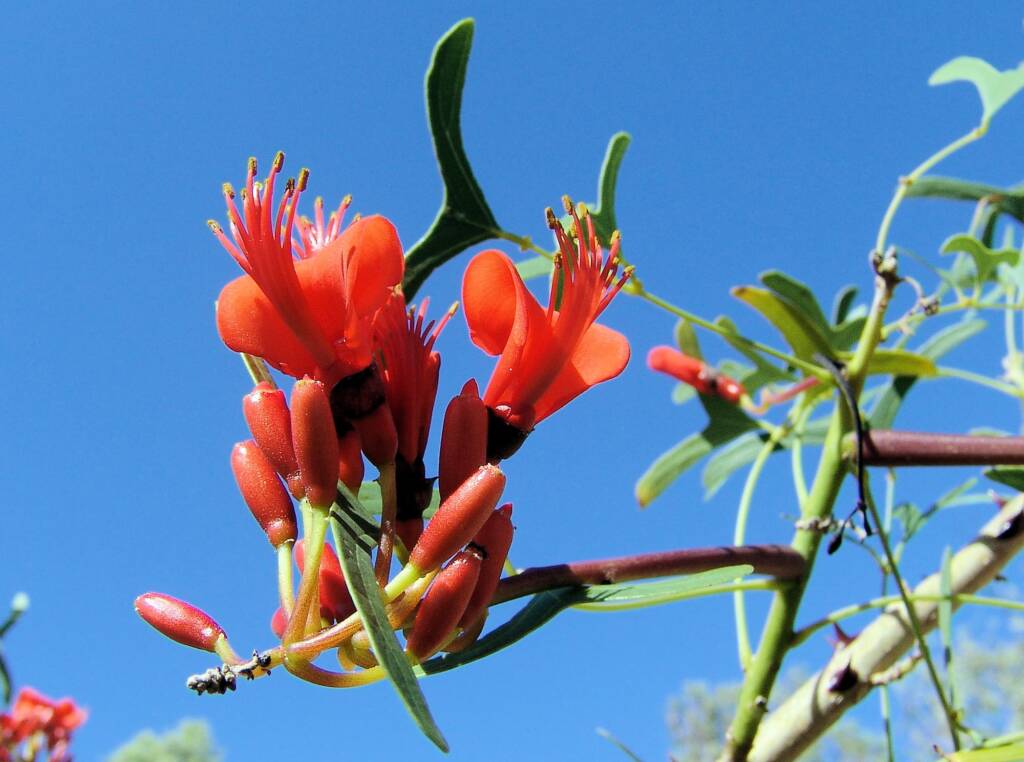
Growing anywhere between 6 to 12 metres in height, this deciduous tree has a smooth corky grey-brown bark and thorns appearing on the trunk and branches.

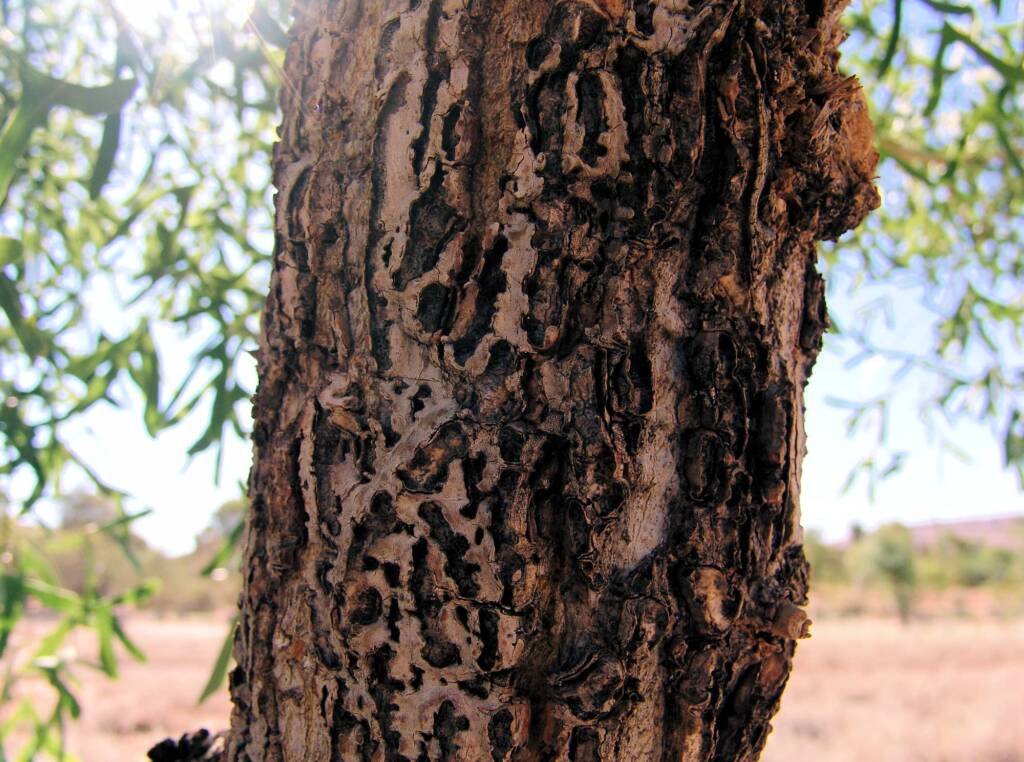
Its habitat includes open forest and woodland, shrubland, rocky gorges, and arid arid regions. Found throughout the state of Queensland up to Cape York, down to the far northern part of NSW, far northern part of Western Australia and Northern Territory, and the arid heart of Central Australia.
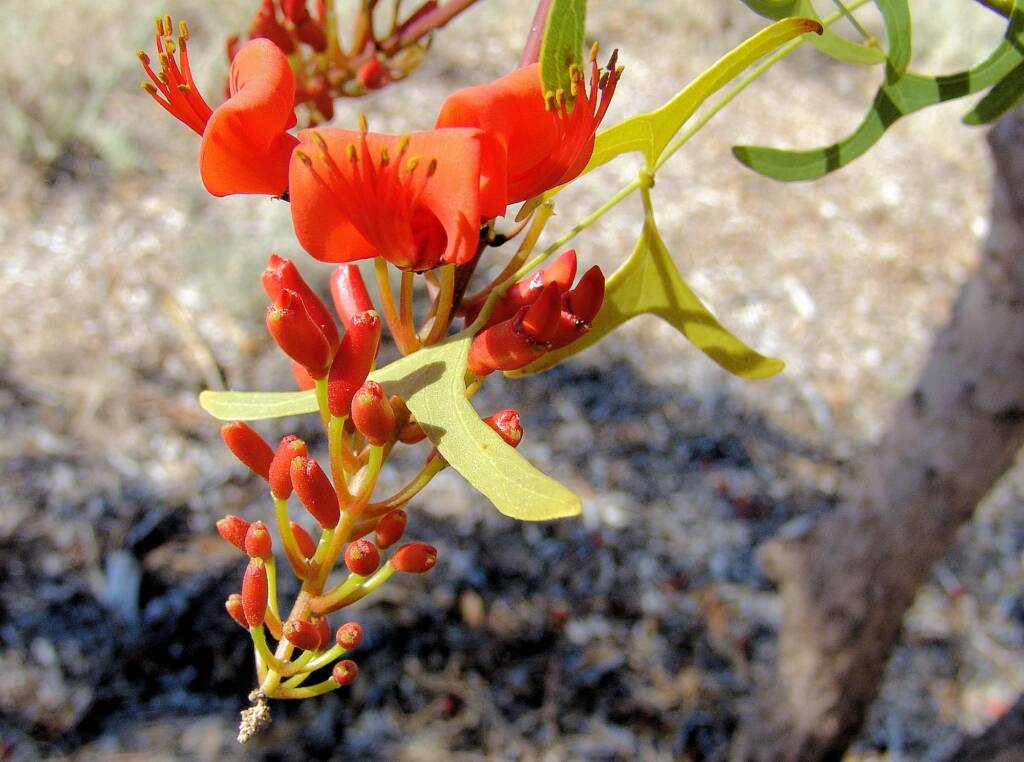
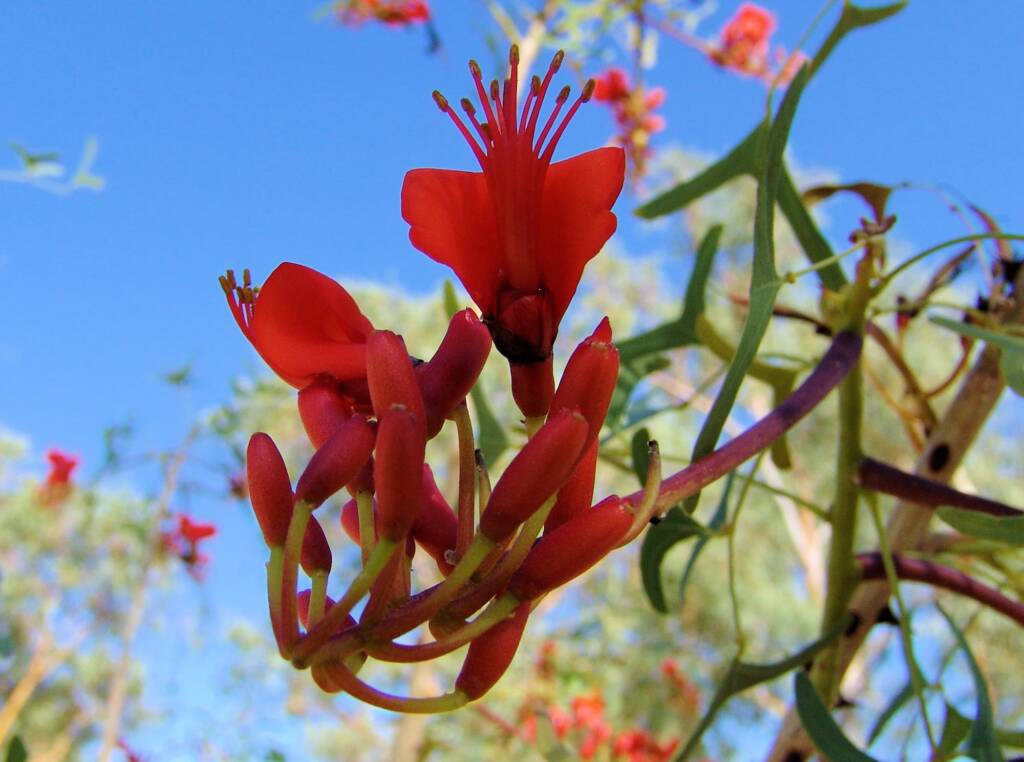

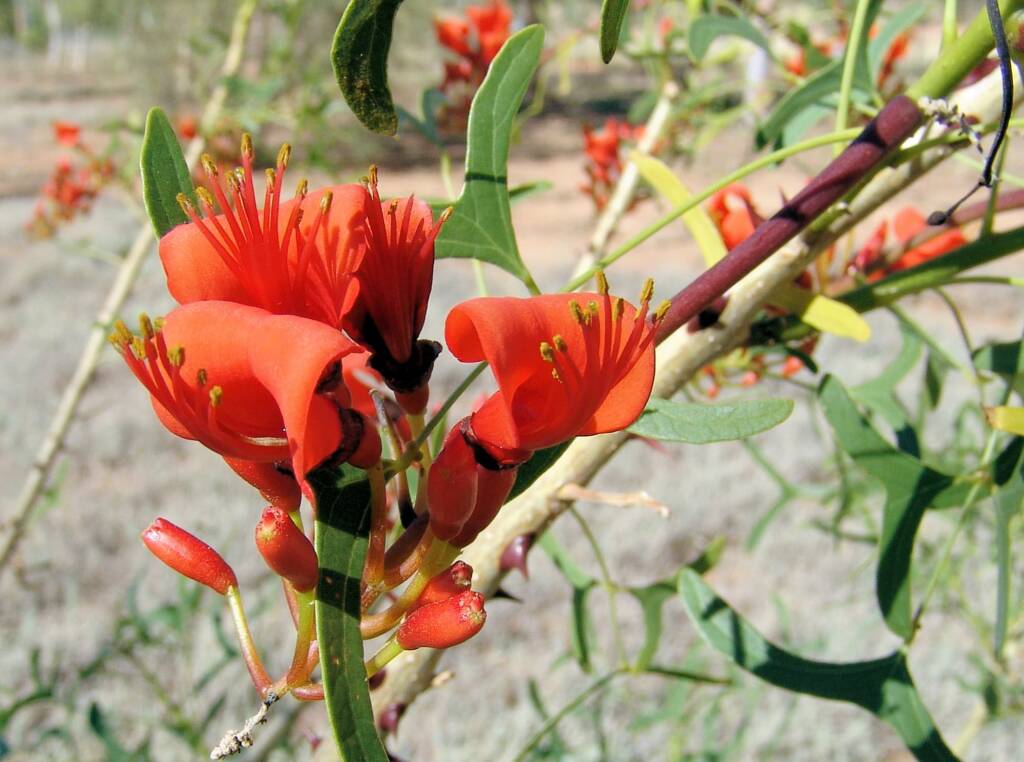
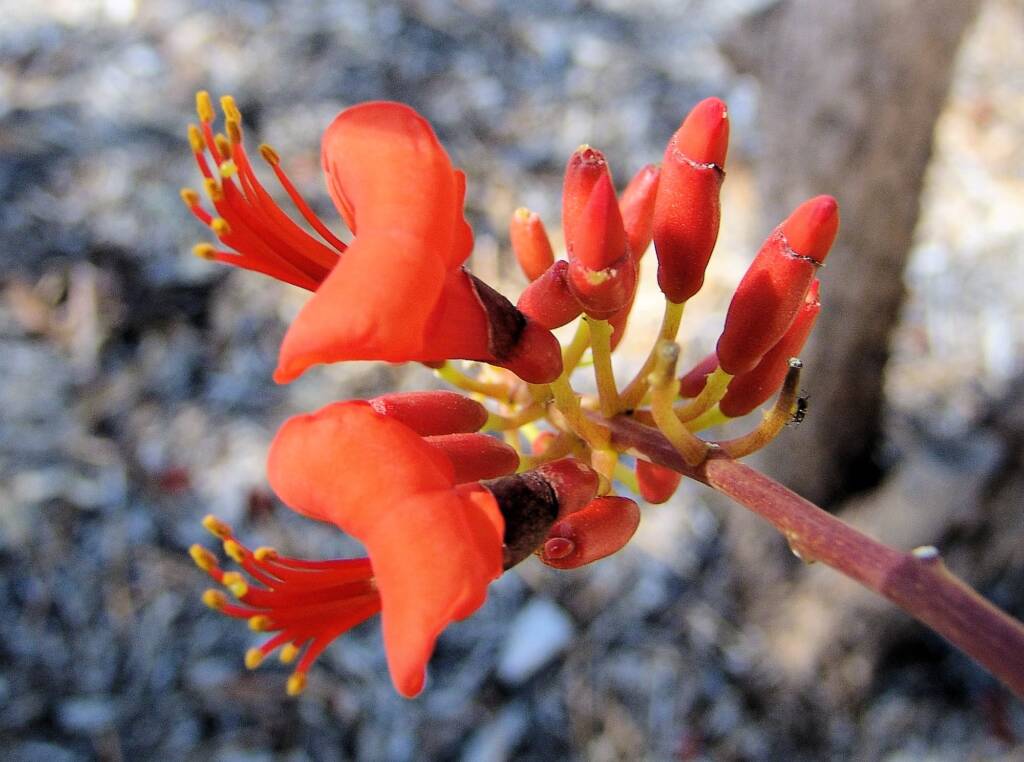
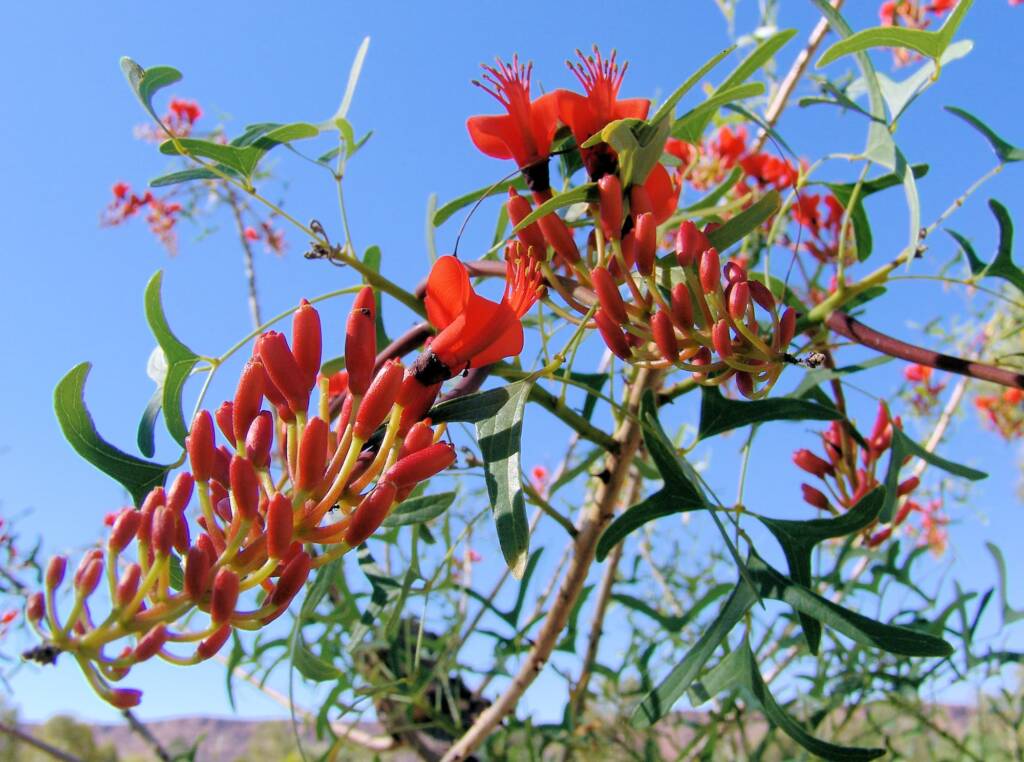

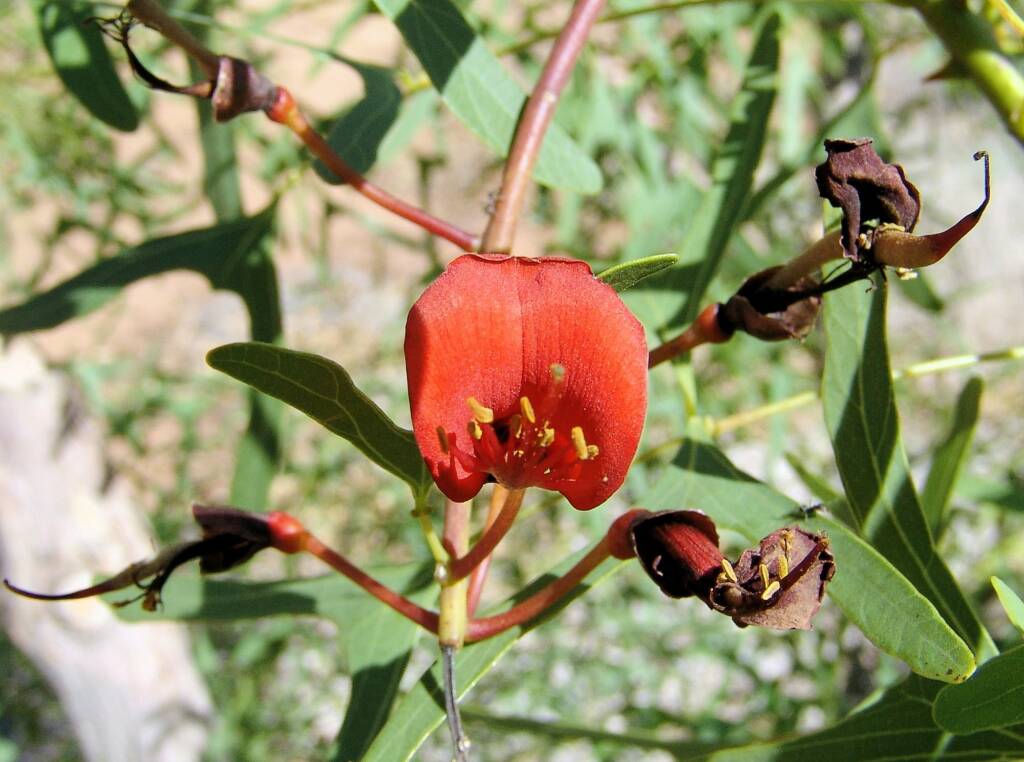
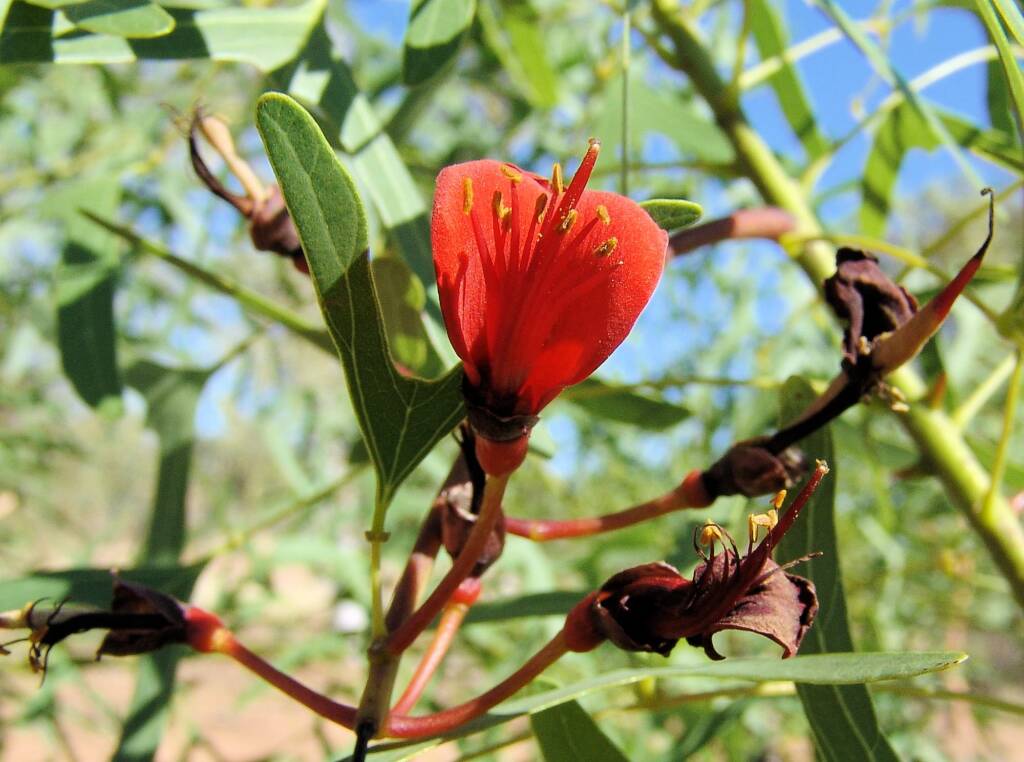
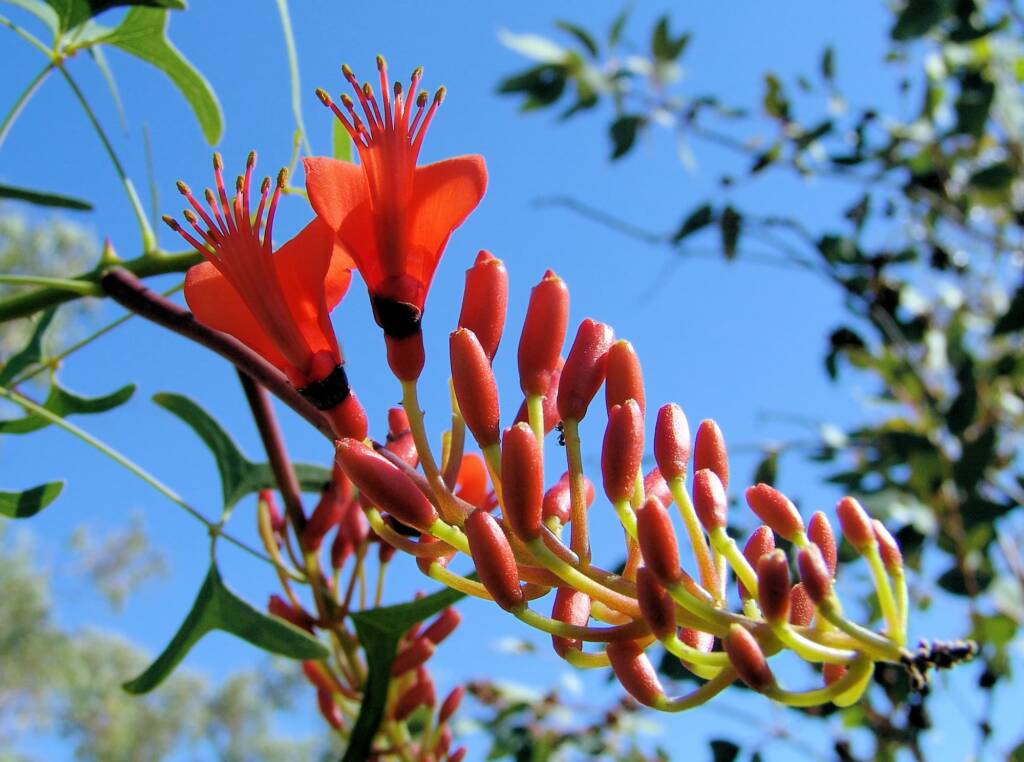
Common name
Bat’s Wing Coral Tree, Bean Tree, Sturt Bean Tree, Grey Corkwood, yulbah.
The seeds of the Bat-wing Coral Tree is know as ‘ininti’ seeds and are collected in the traditional area of the NPY Lands. The seeds are collected by the women dried out. Narrow pieces of wire are heated over a fire, a hole is then burnt though the middle of each seed, then left to air out. The seeds are strung together with wool, string or elastic, and often mixed with gumnuts and quangdong seeds, making beautiful jewellery pieces. The seed can come in different colours that range from yellows through to oranges and rich reds. The bean tree features in aboriginal mythology.
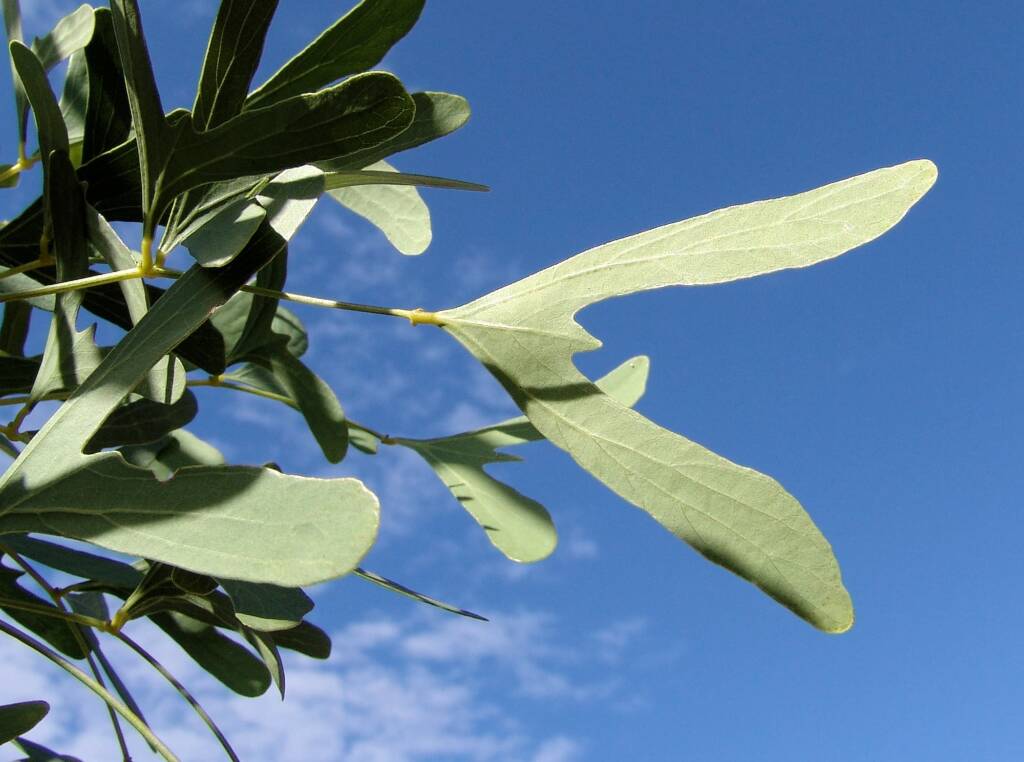


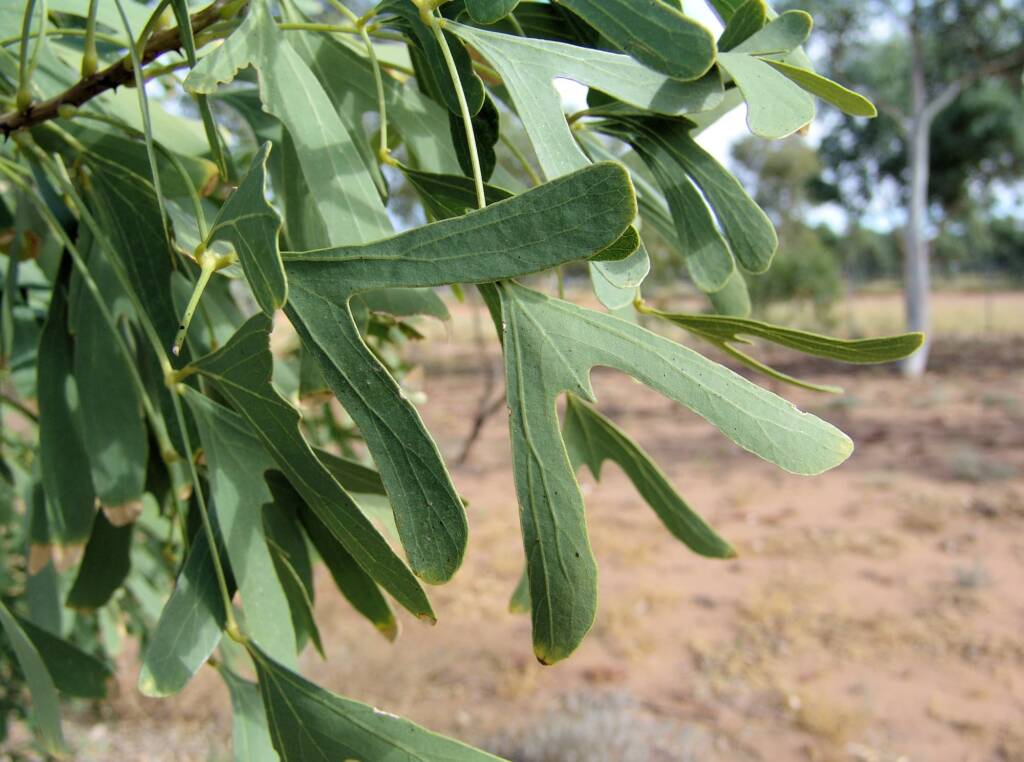
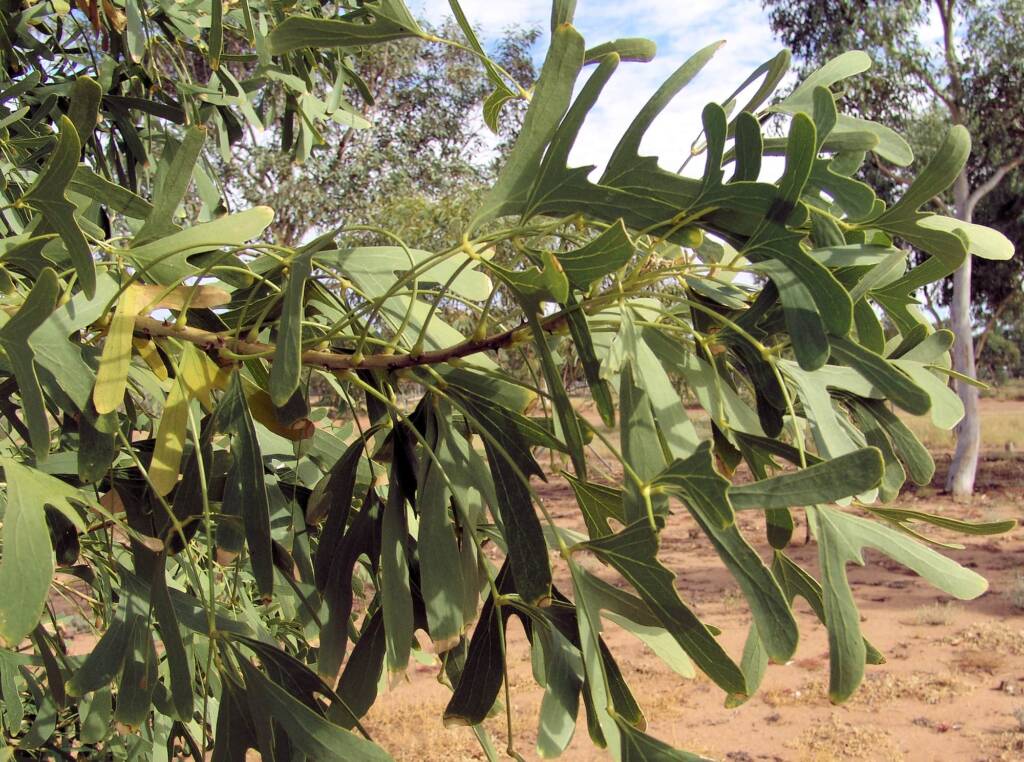

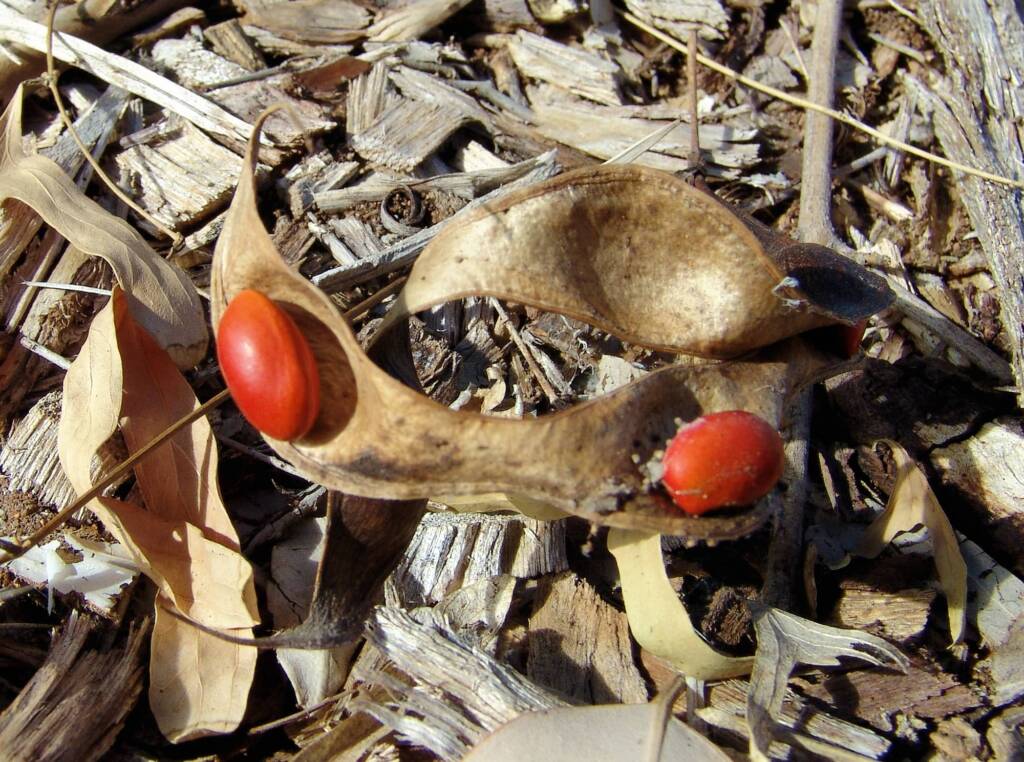
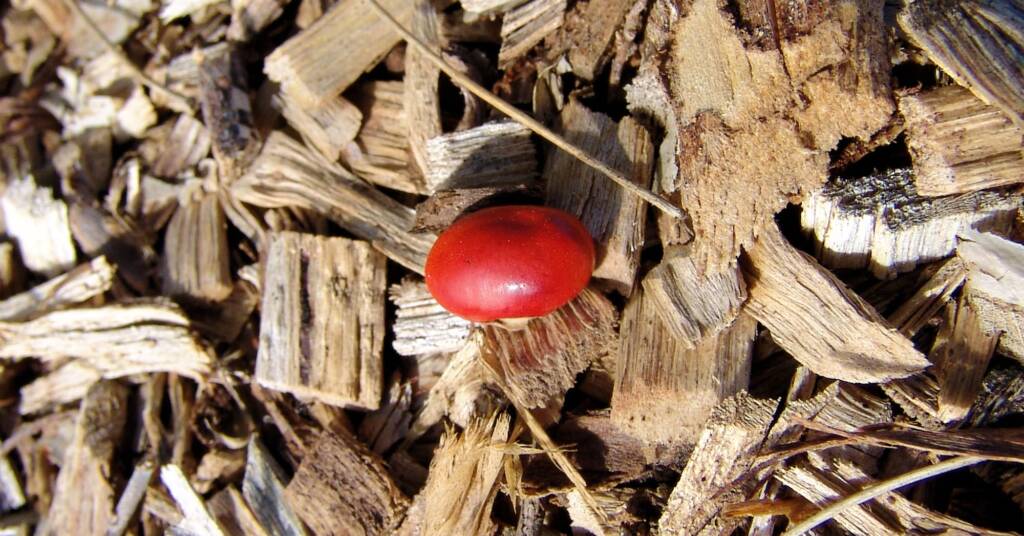
Related links: Alice Springs Desert Park Batswing Coral Tree; Olive Pink Botanic Garden Bean Tree.
- Scientific classification
- Kingdom: Plantae
- Phylum: Charophyta
- Class: Equisetopsida
- Subclass: Magnoliidae
- Superorder: Rosanae
- Order: Fabales
- Family: Fabaceae
- Genus: Erythrina
- Species: Erythrina vespertilio
Footnote & References
FloraFlora in Australia Flora Index Acacia Anigozanthos (Kangaroo Paws) Annual Yellowtop Apium prostratum subsp. prostratum var filiforme Apple Bush (Pterocaulon sphacelatum) Australian Bluebell Australian Gossypium Banksia Batswing Coral Tree Billy Buttons Birdsville Indigo Blue Pincushion Bush Banana Callistemon Callitris drummondii (Drummond’s Cypress Pine) Calothamnus quadrifidus Cape Honeysuckle Cassia fistula (Golden Shower) Cattle Bush Common Heath Crotalaria Darwinia wittwerorum (Wittwer’s Mountain Bell) Daviesia oppositifolia (Rattle-pea) Desert Oaks Drumsticks Eremophila Eucalyptus Ficus Flannel Cudweed (Actinobole uliginosum) Georges Indigo Goatshead Burr (Sclerolaena bicornis) Golden Everlasting Goodenia Gossypium Grass and Grasses Grass Trees Grevillea Grey Germander Hakea Kapok Bush (Aerva javanica) Lambertia sp Leptospermum MacDonnell Ranges Cycad Maireana scleroptera Mexican Poppy Minnie Daisy Mistletoe Family Nardoo Native Apricot Nicotiana megalosiphon subspecies sessilifolia Nuytsia floribunda Orange Spade Flower Orchidaceae Parakeelyas (Calandrinia) Pebble Bush (Stylobasium spathulatum) Perennial Yellow Top Pink Everlasting Pink Rock Wort Poached Egg Daisy Portulaca Proteaceae Ptilotus Quandong Resurrection Fern Rosy Dock Ruby Saltbush Santalum Solanum Spike Centaury Spinifex Storkbill (Erodum cygnorum) Striped Mint Bush Sturt’s Desert Pea Sturt’s Desert Rose Tall Saltbush Tangled Leschenaultia Tar Vine Tribulus eichlerianus Upside-down Plant Urodon dasyphylla Variable Daisy Waratah (Telopea) Wertabona Daisy White Cedar (Melia azedarach) White Indigo White Paper Daisy Wild Passionfruit Wild Stock Woolly-Headed Burr Daisy Woolly Bush Yellow-keeled Swainsona
Flora & FaunaFauna Flora Fauna Flora Funga Glossary Funga Related Topics Scientific Classification Backyard Wildlife Floral Emblems of Australia Wildflowers
